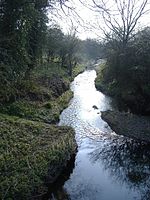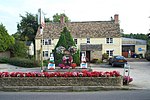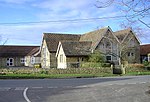Great Somerford
Civil parishes in WiltshireEngvarB from July 2016OpenDomesdayVillages in Wiltshire

Great Somerford is a village and civil parish within Dauntsey Vale, Wiltshire, England, near the south bank of the river Avon. It lies approximately 3+1⁄4 miles (5.2 km) southeast of Malmesbury and 12 miles (19 km) west of Swindon. The hamlet of Startley and the area known as Seagry Heath are within the bounds of the parish.The parish boundaries to the northeast and east follow the Avon, or in some places the river's former course. In the northwest the boundary partly follows the Rodbourne stream, a small tributary which joins the Avon northwest of the village. The Brinkworth Brook joins the Avon in the northwest corner of the parish.
Excerpt from the Wikipedia article Great Somerford (License: CC BY-SA 3.0, Authors, Images).Great Somerford
Top Street,
Geographical coordinates (GPS) Address Nearby Places Show on map
Geographical coordinates (GPS)
| Latitude | Longitude |
|---|---|
| N 51.543 ° | E -2.054 ° |
Address
Top Street
Top Street
SN15 5JG , Great Somerford
England, United Kingdom
Open on Google Maps









